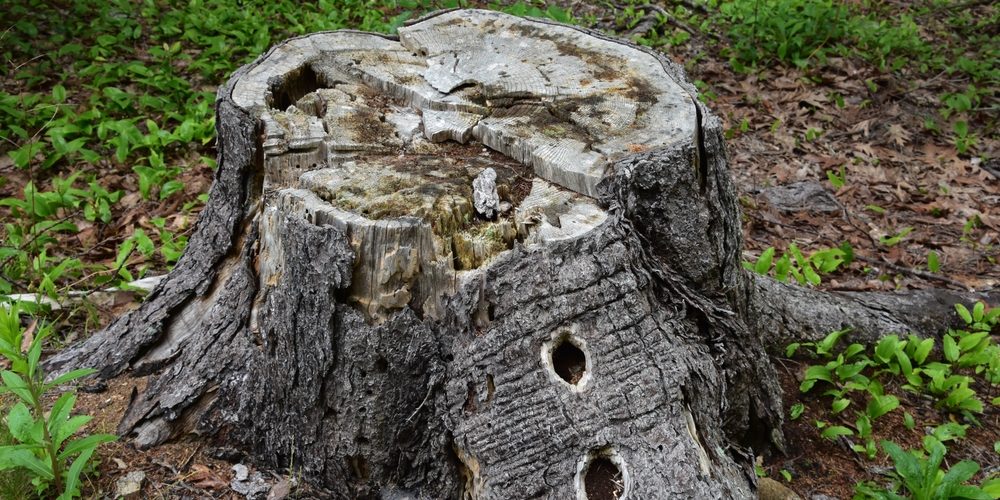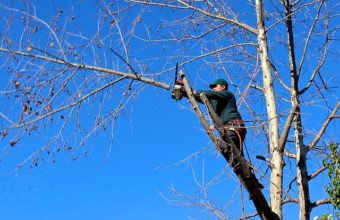Yes, drilling holes in a tree stump can make it rot faster. This technique improves the decomposition process by increasing the stump’s exposure to elements that promote rotting, such as oxygen, moisture, and decomposing organisms like fungi and bacteria.
Here’s a brief overview of why this method works and how to implement it effectively…
How Drilling Holes Aids in Decomposition
- Increased Exposure – Drilling holes into the stump increases its surface area, allowing more oxygen to penetrate the wood. Oxygen is crucial for the aerobic decomposition processes carried out by fungi and bacteria.
- Moisture Retention – The holes enable water to seep deeper into the stump, maintaining a moist environment that is conducive to fungal growth and bacterial activity, both of which are essential for breaking down wood fibers.
- Enhanced Absorption – If you choose to apply a stump-rotting agent, such as a high-nitrogen fertilizer, potassium nitrate, Epsom salt, or a commercial stump removal chemical, the drilled holes allow for deeper penetration and more effective distribution of the substance throughout the stump.
Steps to Accelerate Stump Rotting Through Drilling
- Drill Deep Holes – Use a large drill bit to create deep holes across the top of the stump, spacing them a few inches apart. The deeper the holes, the better, as this allows decomposing agents to penetrate further into the wood.
- Drill Angled Holes – In addition to vertical holes on the top, drilling angled holes around the sides of the stump can increase the internal surface area exposed to air, moisture, and any applied chemicals, enhancing the rotting process.
- Apply a Rotting Agent – Fill the holes with your chosen substance to speed up decomposition. Natural options like Epsom salt or more aggressive chemical stump removers both work. If using Epsom salt, you can also cover the stump with water to help dissolve the salt and spread it throughout the wood.
- Keep the Stump Moist – After applying the rotting agent, water the stump regularly or cover it with a tarp to maintain moisture. This creates an ideal environment for the wood-decomposing organisms to thrive.
- Cover with Organic Material – Optionally, covering the stump with soil, mulch, or compost can further retain moisture and introduce additional microorganisms to speed up the rotting process.
Considerations
- Patience Required – Even with these efforts, rotting a stump is a slow process that can take several months to a few years, depending on the stump’s size, wood type, and environmental conditions.
- Safety and Environmental Impact – When using chemicals, follow the manufacturer’s instructions carefully to ensure safety and consider the potential impact on the surrounding environment. Natural methods are safer but may require more time to achieve results.
Drilling holes is a simple yet effective way to encourage faster decomposition of a tree stump by leveraging natural processes and, if desired, chemical aids. This approach is particularly appealing for those looking to avoid the physical labor and expense of mechanical stump removal methods.






